Suspected perpetrators Ayoub El Khazzani Total number of deaths 0 | Start date August 21, 2015 | |
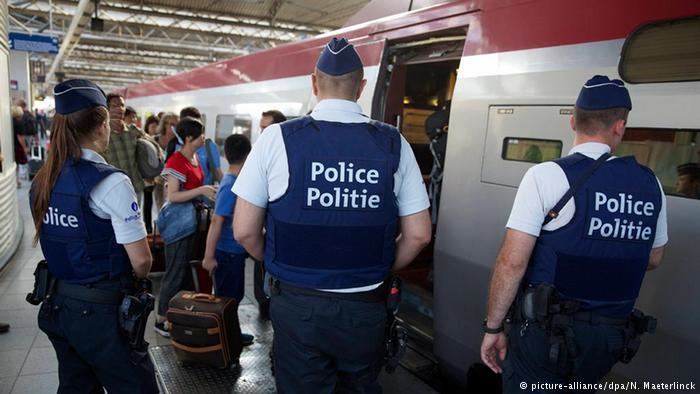 | ||
Attack type Attempted mass shooting Weapons 9mm Luger pistolAKM assault rifleBox cutterBottle of gasoline Non-fatal injuries 4 (3 directly, including the perpetrator) Defenders Damien A., Mark Moogalian, Spencer Stone, Anthony Sadler, Alek Skarlatos, and Chris Norman Similar 2015 Saint‑Quentin‑Fallavier attack, Bodh Gaya bombings, 2008 Danish embassy, 2014 Jewish Museum, Porte de Vincennes siege | ||
On 21 August 2015, a shooting and stabbing incident took place on board a Thalys train in France on its way from Amsterdam to Paris. The train had just crossed the border from Belgium into France and was traveling through Oignies in the department of Pas-de-Calais, when the perpetrator opened fire in a train carriage before being subdued by passengers, one of whom he stabbed. Including the assailant, four people were injured, none fatally. The incident is believed by French police to be an Islamist terrorist attack, although the gunman claimed the motivation was robbery due to hunger. Several people who subdued the attacker were awarded France's highest decoration, the Legion of Honour, as well as other awards.
Contents
Attack
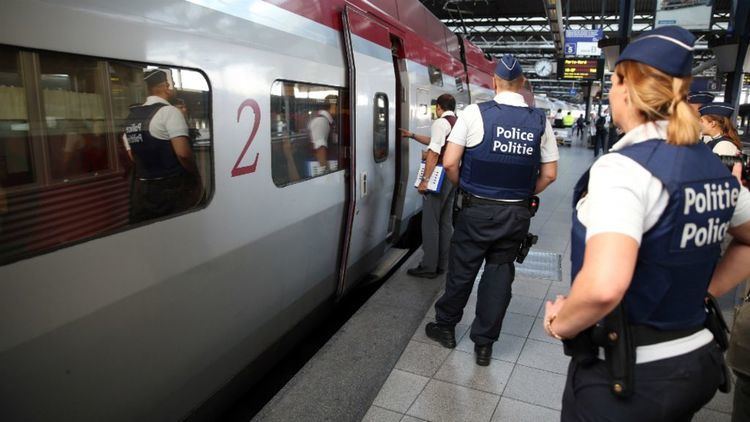
On 21 August, at approximately 17:45 CEST (5:45 p.m.), 25-year-old Moroccan man Ayoub El Khazzani reportedly exited the toilets on car No. 12 of Thalys train 9364 traveling from Amsterdam to Paris, shortly after the train had crossed the border from Belgium into France. He was shirtless and armed with an AKM assault rifle, for which he had nine magazines and a total of 270 rounds of ammunition. He was also carrying a pistol and a bottle of petrol.
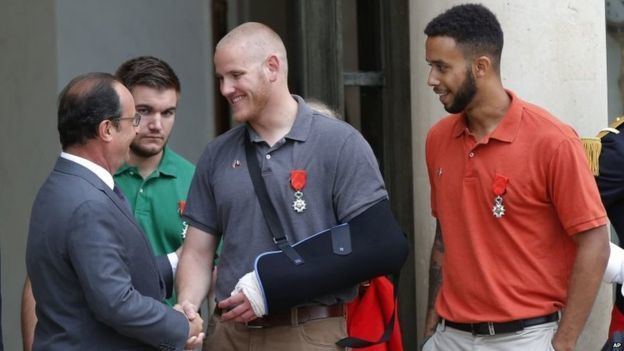
A 28-year-old Frenchman, whose name was released only as "Damien A.", was heading to the toilet as the armed gunman was exiting. Damien A. attempted to restrain or disarm the gunman but fell to the floor in the ensuing struggle. An American-born Frenchman, 51-year-old Mark Moogalian, attempted to wrest the rifle from the gunman, who then drew a semi-automatic 9mm Luger pistol. Moogalian was shot through the back of the neck; seriously injured, he played dead. The assailant also tried to fire his rifle, but it jammed.
Subduing of the suspect
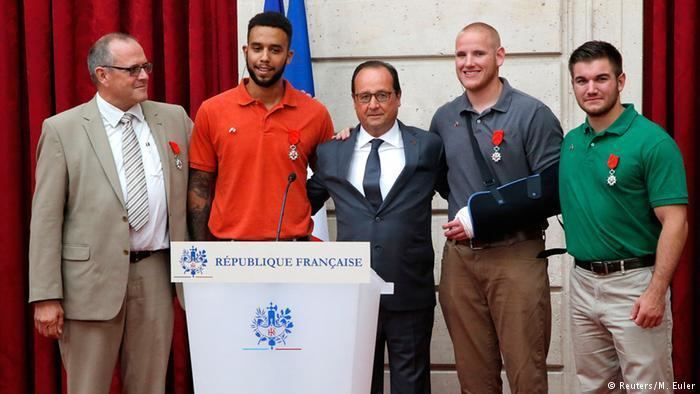
The gunman was then tackled and subdued by a group of three American friends, two of them off-duty members of the U.S. Armed Forces. They were identified as 23-year-old Airman First Class Spencer Stone, 23-year-old Anthony Sadler, and 22-year-old Specialist Alek Skarlatos. Sadler told CNN that Skarlatos yelled "Get him!" after which "Spencer immediately gets up to charge the guy, followed by Alek, then myself." In an interview with Sky News, Skarlatos added that they had been lucky that the attacker's rifle had jammed.
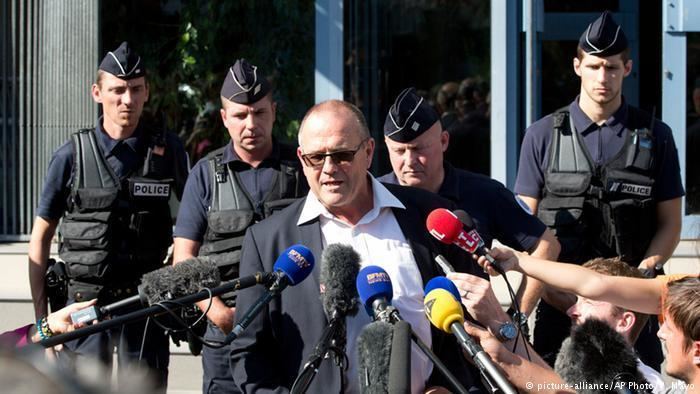
Stone was reportedly the first of the three Americans to attack the gunman and was slashed multiple times while trying to subdue him, sustaining injuries to the hand, head, and neck. Stone put him in a chokehold, holding on though the assailant was cutting him with a box cutter, nearly severing his thumb. Skarlatos seized the assailant's rifle and beat him in the head with its muzzle until the assailant was unconscious. A British passenger, 62-year-old Chris Norman, and a French train driver came to their aid to hold the gunman down. They used Norman's T-shirt to tie his arms behind his back.
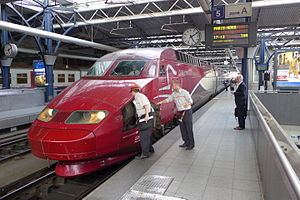
The passengers then helped Moogalian, who "had blood pouring from the neck" due to his gunshot wound. Stone, who is a medic, initially tried to wrap his shirt around the wound, despite having an injured hand and cut eye himself. However, he realized it was not going to be effective in stopping the bleeding. Instead, he stuck two of his fingers into Moogalian's wound and pushed down on what he thought was an artery, which stopped the bleeding.
The train, which was carrying 554 passengers, was passing Oignies in the Pas-de-Calais department when the attack took place. It was rerouted to the station of nearby Arras. Moogalian was airlifted to the University Hospital in Lille, while Stone was later treated for wounds on his thumb, an eye injury, and other minor wounds. The remaining passengers were all brought to a gym in Arras, where they were searched and had their identity documents checked before being allowed to proceed to Paris.
Suspect
Ayoub El Khazzani (born 3 September 1989, also spelled El-Khazzani and el-Qazzani), a 25-year-old man from Morocco, was identified as the suspected assailant by French and Spanish authorities; he had boarded the train in Brussels. He carried no identification but was identified by his fingerprints. Prior to the attempted attack, he had resided in Aubervilliers, Seine-Saint-Denis, France, since 2014. El Khazzani was originally from Tétouan in northern Morocco, and moved to Spain in 2007, two years after his father had legalized his status there. He was an employee at the mobile phone operator firm Lycamobile for two months in early 2014 before leaving due to not having the right work papers.
El Khazzani was apparently known to French authorities and had been tagged with a "fiche S" (S file or security file), the highest "warning" level for French state security. He had been similarly profiled by Belgian, Spanish, and German authorities. El Khazzani had reportedly lived in the Spanish cities of Madrid and Algeciras from 2007 to March 2014. During his time in Spain, he attracted the attention of authorities after making speeches defending jihad, attending a known radical mosque, and being involved in drug trafficking. He then moved to France, at which time the Spanish authorities informed the French of their suspicions. However, French Interior Minister Bernard Cazeneuve claimed that he moved to Belgium first in 2015. He had reportedly spent time between May and July in Syria before moving to France.
Possible motives
According to prosecutor François Molins, El Khazzani listened to a "YouTube audio file in which the individual exhorted his followers to raise arms and fight in the name of the prophet" and that his Internet browsing history showed "clear evidence of terrorist intent." Prosecutors discovered the files on his phone, which they say he listened to immediately prior to the attack.
Sophie David, a lawyer initially assigned to his case but no longer representing him, said that El Khazzani says he was homeless because his ID was stolen, that he slept in a Brussels park where he found a suitcase containing the rifle and the pistol, and that he had no intention to massacre the passengers but planned to rob them so he could get food. He denies firing a single shot and was said to not have any firearms training. However, authorities said El Khazzani's explanations became less plausible with each questioning and he had eventually stopped talking to investigators. On 23 August, Belgian authorities began investigating whether El Khazzani had an accomplice.
Possible source of weapons
French newspaper La Voix du Nord said that the gunman in the Thalys attack may have had connections to groups targeted by the Belgian counter-terror operation, and authorities are currently investigating the link. One of the gunmen in the 2015 Île-de-France attacks had purchased automatic weapons and a rocket launcher from Belgian gangs, allegedly in a black market near Gare du Midi, the station that the gunman in the Thalys attack boarded from.
Legal proceedings
Preliminary charges were filed against El Khazzani on 25 August by the Paris prosecutor's office for attempted murder in connection with terrorism, possession of weapons in connection with terrorism, and participation in a terrorism conspiracy. He was remanded into custody.
One year after the attack, on 21 August 2016, El Khazzani was still in jail, awaiting his trial. He remained the only person charged in the case.
Involved passengers
Among the train's passengers, the following were noted by the press for their involvement in the incident:
On 24 August, Norman, Sadler, Skarlatos, and Stone were made Knights of the Legion of Honour (Chevaliers de la Légion d'honneur) by French president François Hollande. Moogalian was also made a Knight of the Legion of Honour on 13 September 2015, with Damian A. expected to be similarly honored at a later date. The uninjured, Norman, Sadler, and Skarlatos were also awarded the medal of the city of Arras.
In the US, Sadler was also awarded the Secretary of Defense Medal for Valor. Skarlatos was awarded the Soldier's Medal, the highest award for actions not taken in combat, while Stone was awarded the Airman's Medal and the Purple Heart. Stone was also meritoriously promoted two grades on 1 November to Staff Sergeant. Stone and Sadler also received the Civic Medal 1st class from the Prime Minister of Belgium.
Government reactions
EU collaboration
Koen Geens, the Belgian Minister of Justice called for increased collaboration within the EU on arms trafficking. Geens said "I do not believe that these weapons are of Belgian origin" and "there are far too many illegal Kalashnikovs and [military surplus] arriving in Belgium from Eastern Europe." He called for more effective arms control outside the Schengen zone, and flagged increased police powers against weapons traffickers. On 29 August, ministers from France, the UK, Germany, Italy, Spain, Belgium, Luxembourg, the Netherlands, and Switzerland met in Paris to discuss train security, including the possibility of using metal detectors for some international train passengers.
Security improvements
In response to the attack, the Belgian government decided to increase patrols of Belgian police at international train stations and to increase baggage checks. Belgian Prime Minister Charles Michel called for urgent talks with France, Germany and the Netherlands on increasing security on cross-border trains. The European Commission said that the Schengen treaty is non-negotiable, and that increased security checks cannot include border checks. European Union officials are now considering introducing metal detectors and body scans at all train stations, along with an increase in CCTV cameras inside trains.
Investigations
Three different official investigations have been launched by governmental authorities, one in France, another in Spain, and the third in Belgium. In addition, Thalys International has launched their own internal investigation.
French and Spanish investigations
On 21 August, the anti-terrorist section of the French public prosecutor's office in Paris took over the investigation based on "the arms used, the events that unfolded, and the context."
In view of the gravity of the acts he was accused of, the suspect was placed in custody for a period which could be extended to 96 hours. According to the police, based on the modus operandi the attack resembled a terrorist attack.
A Spanish police spokesman said that the suspect's parents' house in Algeciras had been searched.
In the aftermath of the November 2015 attacks in Paris, it was reported that Abdelhamid Abaaoud was under investigation by French police as a possible link to the Thalys attack.
Belgian investigation
A spokesman for the Belgian Federal Prosecutor's Office announced on 22 August that they had launched an investigation into the attempted attack. They consider that Belgium is involved due to the heavily armed perpetrator having boarded the train at Brussels-South railway station.
Thalys investigation
At the initiative of the French National Railway's President, Guillaume Pepy, an internal investigation was launched by Thalys in order to shed light on the sequence of events during the attack.
On 18 September, Thalys published an internal report about the assault.
The train crew was originally accused of running from the scene by Jean-Hugues Anglade, a French actor traveling with his partner and children in the No. 11 car (the last car before the rear engine). He alleged that the train crew locked themselves in the engine car and did not come to the aid of passengers. Anglade told Paris Match that they heard gunshots and screaming in the next car, after which several crew members rushed past them to the engine car, opened it with a special key and locked themselves inside. Anglade, said he saw the gunman through the door between the cars and that the dozen passengers in his car were pressed against the engine car door, banging on it and begging the crew to open it:
We shouted for staff to let us in, we were yelling, 'Open up!' in vain.... Nobody responded to us. Not a squeak. This abandonment — so much distress, loneliness — it was terrible and unbearable! For us it was inhuman. The minutes seemed like hours.
Anglade stated that Anthony Sadler later came into their car searching for blankets and a first aid kit for the wounded, and told them the assailant had been subdued. Sadler also banged on the door of the engine car to no avail, said Anglade, who expressed his gratitude.
Anglade's claims of "abandonment" by the crew were denied by the Thalys corporation. On 23 August, Anglade and his partner met Thalys director Agnès Ogier, director-general of Thalys, and SNCF president Guillaume Pepy. In a joint statement released after the meeting, the actor confirmed his testimony and accusations of abandonment, but acknowledged that the two crew members who locked themselves in the engine car with a handful of passengers were not Thalys employees but contractors from a catering company. He added, "The French conductor and the other Thalys employee present in the coach where the assault took place showed... heroic behavior."
Agnès Ogier defended the train employees, who she said "have fulfilled their duty" and were unaware the terrorist had been subdued. She also reported that a male employee took five or six passengers with him while seeking shelter.
Anglade suffered a minor hand injury when he attempted to access the emergency hammer for breaking the train window.
Treatment of suspect
On 26 August, El Khazzani's lawyer, Me Mani Ayadi, criticised the treatment of his client during the latter's transfer to the courthouse, where a handcuffed El Khazzani was walked into the building blindfolded and barefoot. In response, a French official familiar with the case stated that the authorities followed standard security precautions, which dictate that suspects charged with terrorism and organized crime be blindfolded so they cannot later identify the officials escorting them. The official also said the accused refused to wear the shoes offered to him.
On 1 September, the French public prosecutor's office issued a warning to television network i-Télé after its 25 August broadcast showing suspect El Khazzani arriving at the courthouse in handcuffs. It is illegal in France to publish images of people in handcuffs (prior to their conviction) without their consent, due to the presumption of innocence. i-Télé digitally blurred out El Khazzani's hands, but the prosecutor's office warned the network that this was insufficient, and criminal charges would be brought against it if this reoccurred.
